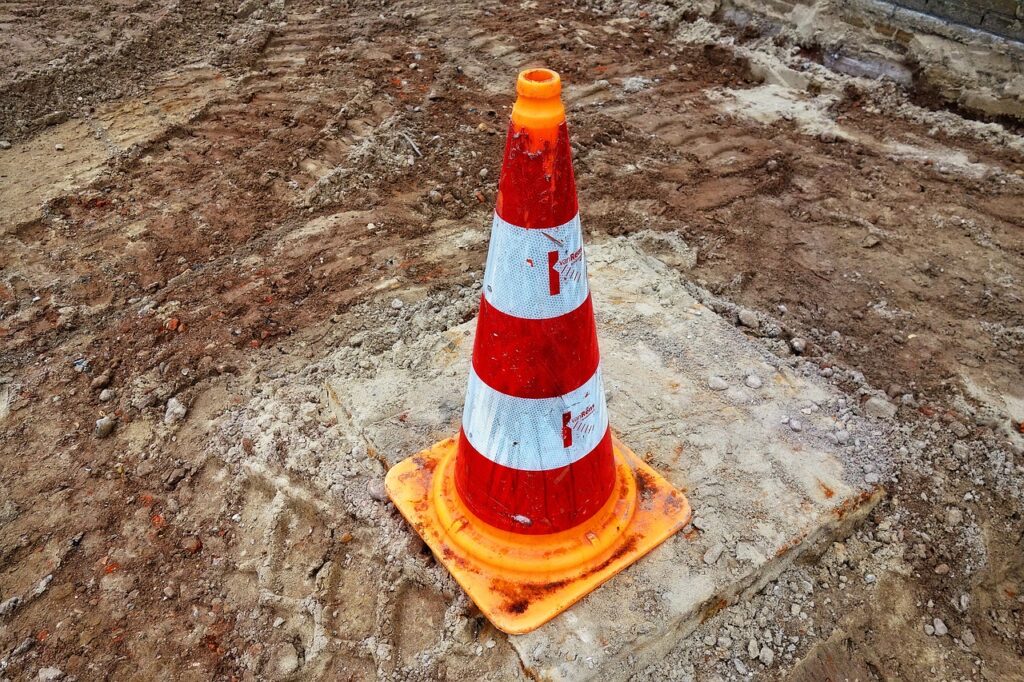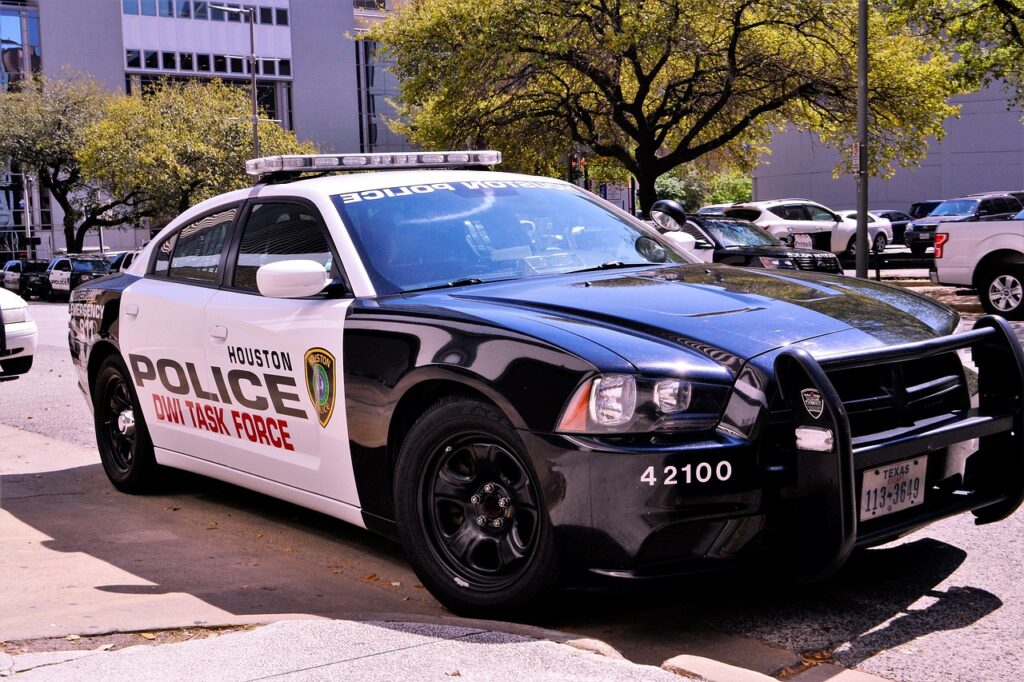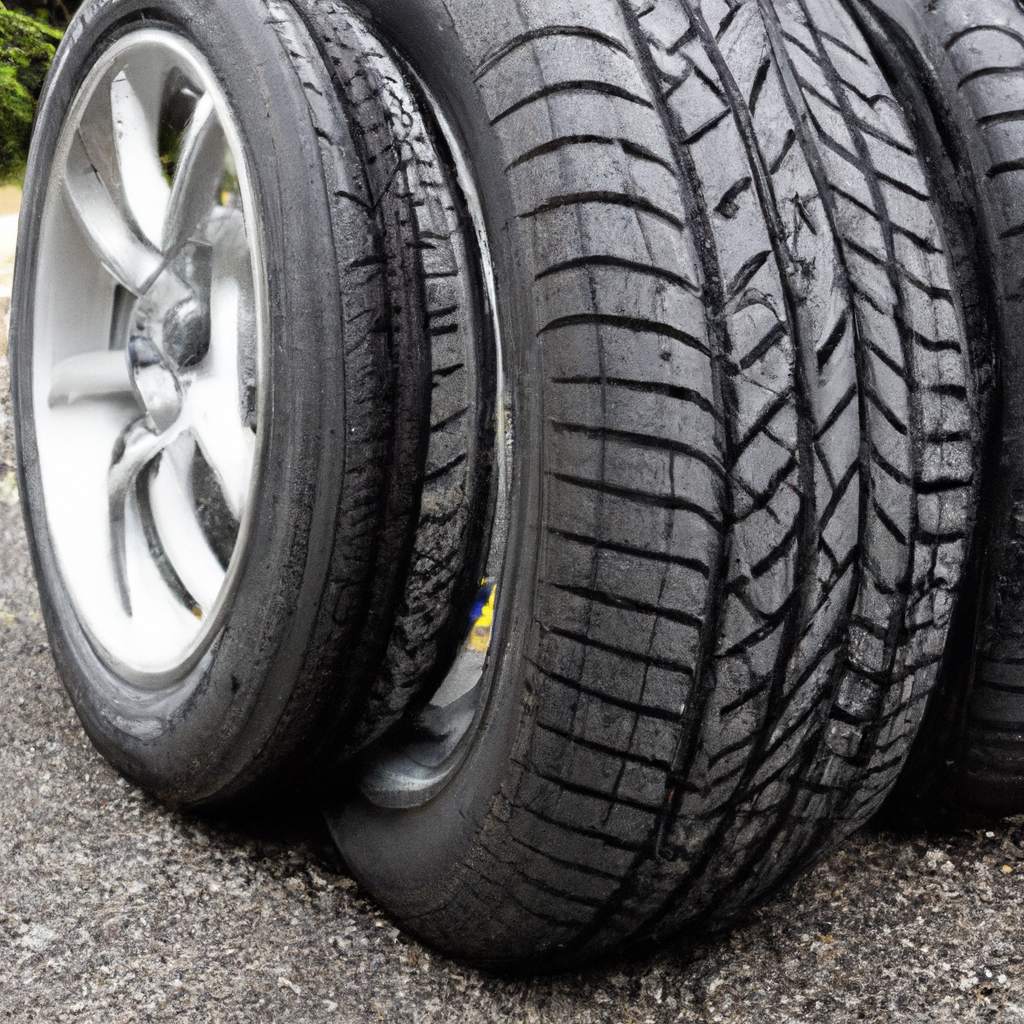Imagine you’re cruising down the road, wind in your hair, with the perfect playlist serenading you. Suddenly, you feel a slight vibration in the steering wheel, and the car starts to pull to one side. Panic sets in as you struggle to regain control. What could be causing this nightmare scenario? Well, one possible culprit could be mismatched tire sizes. In this article, we’ll explore the dangers of using different sized tires on your vehicle and why it’s essential to ensure they match. So, fasten your seatbelt and join us on this eye-opening journey to understand why tire size matters more than you might think.

Decreased Handling and Control
Uneven Weight Distribution
Having mismatched tire sizes can result in an uneven weight distribution on your vehicle. This imbalance can cause one side of the vehicle to have more weight on it than the other, leading to a decrease in handling and control. When the weight is not evenly distributed, it becomes more difficult for your tires to maintain proper traction and grip on the road, affecting your overall driving experience.
Different Traction Levels
Another danger of mismatched tire sizes is the difference in traction levels. Each tire is designed to provide a specific level of traction based on its size and tread pattern. When you have mismatched tire sizes, the traction levels between the tires can vary, resulting in an inconsistent grip on the road. This uneven traction can lead to unpredictable handling and potentially dangerous situations, especially during sudden maneuvers or in adverse weather conditions.
Increased Risk of Hydroplaning
Mismatched tire sizes can also increase the risk of hydroplaning. Hydroplaning occurs when your tires lose contact with the road surface and instead ride on a thin layer of water. This loss of traction can cause you to lose control of your vehicle and pose a serious safety hazard. With mismatched tire sizes, the variation in tire tread depth and width can disrupt the even distribution of water and increase the chances of hydroplaning, especially at higher speeds or in wet conditions.
Reduced Braking Performance
Uneven Braking
Mismatched tire sizes can negatively impact your vehicle’s braking performance. When you apply the brakes, the weight shifts forward, and the tires are responsible for providing the necessary grip to slow down and stop the vehicle. However, with mismatched tire sizes, the braking force is not distributed evenly between the tires. This uneven braking can lead to instability and compromised control, making it more challenging to come to a smooth and controlled stop.
Increased Stopping Distance
In addition to uneven braking, mismatched tire sizes can also increase the stopping distance of your vehicle. The tires with less traction and grip may take longer to bring the vehicle to a complete stop, especially in emergencies or sudden braking situations. A longer stopping distance reduces your ability to react promptly to potential hazards on the road, putting you and others at greater risk of accidents and collisions.
Decreased Grip on the Road
One of the key functions of tires is to provide grip on the road. Mismatched tire sizes can significantly decrease the overall grip, and consequently, the traction between the tires and the road surface. This decreased grip can make it more challenging to maintain control, especially during turns or maneuvers that require a high level of traction. Without sufficient grip, your vehicle may experience skidding or sliding, causing potential loss of control and an increased risk of accidents.
Impact on Vehicle Stability
Unequal Tire Tread Wear
Mismatched tire sizes can lead to unequal tire tread wear. Tires that are not evenly worn can further worsen the handling and control of your vehicle. The mismatched sizes may cause certain tires to experience excessive wear and tear, while others remain relatively unaffected. Unequal tire tread wear can result in a lack of balance, making it difficult to maintain stability and control while driving.
Uneven Suspension Stress
Another consequence of mismatched tire sizes is the uneven stress placed on the suspension system of your vehicle. The suspension system is responsible for absorbing shocks and maintaining stability. When the tires have different sizes, they exert varying amounts of stress on the suspension components. This imbalance can lead to premature wear and damage to the suspension system, compromising its effectiveness and further compromising the stability and comfort of your vehicle.
Imbalanced Cornering
Mismatched tire sizes can also affect the way your vehicle corners. During turns, the tires on each side of the vehicle should work together to provide a stable and controlled cornering experience. However, with mismatched tire sizes, the tires may have different levels of traction and grip, leading to imbalanced cornering. This imbalance can make your vehicle feel less stable and increase the chances of understeering or oversteering, making it more difficult to navigate corners safely.
Risk of Tire Failure
Increased Stress on Tires
Mismatched tire sizes can put additional stress on your tires. When tires of different sizes are used together, it disrupts the uniformity of the rotational forces acting on the tires. This extra stress can cause accelerated tire wear, leading to a higher risk of tire failure. Over time, the constant strain on the tires can result in structural damage and weaken their integrity, making them more susceptible to blowouts and punctures.
Excessive Heat Buildup
Another danger of mismatched tire sizes is the potential for excessive heat buildup. Tires generate heat as they roll, and this heat needs to dissipate evenly to maintain optimal tire performance. When mismatched tires are used, the varying sizes can disrupt the heat distribution, leading to localized hotspots on the tires. Excessive heat buildup can cause tire degradation, reduce their overall lifespan, and increase the likelihood of tire failure.
Higher Chance of Blowouts
Mismatched tire sizes significantly increase the chances of tire blowouts. The differences in tire sizes result in an uneven distribution of stress on the tires, increasing the risk of weakened areas or vulnerable spots. As a result, the compromised tires are more susceptible to sudden and catastrophic failure. A blowout while driving can lead to a loss of control and potentially result in accidents or collisions, posing a significant risk to your safety and the safety of others on the road.

Fuel Efficiency Reduction
Increased Rolling Resistance
Using mismatched tire sizes can negatively impact your vehicle’s fuel efficiency. The rolling resistance of a tire refers to the amount of energy required to keep the tire rolling. When you have mismatched tire sizes, the variation in tire diameter and width can result in different rolling resistances. The tire with higher rolling resistance will require more energy from your vehicle’s engine to maintain the same speed, ultimately leading to increased fuel consumption and reduced fuel efficiency.
Inaccurate Speedometer Reading
Another consequence of mismatched tire sizes is the inaccurate speedometer reading. The speedometer relies on the rotation of the tires to determine the vehicle’s speed. When the tires have different sizes, the rotations per minute will also vary, causing the speedometer to provide inaccurate readings. This discrepancy can lead you to believe you are traveling at a different speed than you actually are, potentially resulting in speeding violations or driving too slowly, putting yourself and others at risk.
Increased Fuel Consumption
Mismatched tire sizes can also contribute to increased fuel consumption. When your tires are not evenly matched, it can create an imbalance in the vehicle’s rotational dynamics. This imbalance can lead to additional energy being required to maintain forward momentum, ultimately causing higher fuel consumption. Over time, the inefficiency can become costly, as you’ll find yourself making more frequent trips to the gas station, affecting both your wallet and the environment.
Difficulty in Handling Emergency Situations
Unpredictable Vehicle Behavior
Having mismatched tire sizes can make your vehicle’s behavior unpredictable, especially when faced with emergency situations. The varying levels of grip, traction, and responsiveness among the tires can result in inconsistent handling. In critical moments, such as sudden evasive maneuvers or unexpected obstacles on the road, the unpredictable behavior of your vehicle can impede your ability to react swiftly and safely.
Loss of Stability during Maneuvers
In emergency maneuvers, stability is crucial to maintaining control of your vehicle. Mismatched tire sizes can compromise the stability of your vehicle during these critical moments. The differences in traction between the tires can lead to uneven weight distribution and an imbalance in cornering forces, making it more challenging to execute evasive actions without losing stability. This loss of stability can jeopardize your safety and the safety of others on the road.
Oversteering or Understeering Issues
Mismatched tire sizes can also cause oversteering or understeering issues. Oversteering occurs when the rear of the vehicle loses traction and causes the vehicle to spin out. Understeering, on the other hand, happens when the front tires lose traction, causing the vehicle to go straight instead of following the intended steering inputs. Both oversteering and understeering can result from the varied levels of grip and traction provided by mismatched tire sizes, making it difficult to maintain control of your vehicle in emergency situations.

Negative Impact on Suspension System
Uneven Suspension Wear
Mismatched tire sizes can lead to uneven wear and tear on your vehicle’s suspension system. The suspension components are designed to work in harmony with the tires to provide a comfortable ride and maintain stability. However, when the tires have different sizes, they stress the suspension system unequally, leading to premature wear on specific components. Uneven suspension wear can result in a compromised suspension system, reduced comfort, and a deterioration in overall ride quality.
Strain on Shock Absorbers
The shock absorbers play a crucial role in dampening the vibrations and impacts experienced by your vehicle’s suspension system. Mismatched tire sizes can increase the strain on the shock absorbers, as they have to compensate for the unevenness caused by the different-sized tires. The excessive strain on the shock absorbers can lead to accelerated wear and reduced effectiveness, further compromising the suspension system’s ability to provide a smooth and controlled ride.
Reduced Comfort and Ride Quality
The comfort and ride quality of your vehicle can be negatively affected by mismatched tire sizes. With tires of different sizes, the suspension system has to work harder to compensate for the inconsistencies, resulting in a less comfortable ride. The imbalances created by the mismatched sizes can lead to a rougher and more jarring driving experience, causing discomfort for both the driver and passengers. Moreover, the compromised suspension system can transmit more vibrations into the vehicle, further deteriorating the overall ride quality.
Legal Consequences
Violation of Vehicle Regulations
Using mismatched tire sizes can put you at risk of violating vehicle regulations. Authorities require vehicles to have uniform tire sizes as prescribed by the manufacturer or regional regulations. Mismatched tire sizes may not meet these requirements, making your vehicle non-compliant with the law. In the event of an inspection or traffic stop, you may face penalties or fines for using tires that do not adhere to the specified regulations.
Increased Liability in Accidents
In the unfortunate event of an accident, having mismatched tire sizes can increase your liability. Insurance companies and legal authorities may deem the use of mismatched tires as a contributing factor to the accident. If it is determined that the mismatched tire sizes negatively impacted the handling, control, or braking performance of your vehicle, it could lead to greater liability for damages and potential legal consequences. It is essential to prioritize safety and maintain proper tire sizes to mitigate the risk of accidents and their associated liabilities.
Insurance Coverage Issues
Using mismatched tire sizes can also present challenges when it comes to insurance coverage. Insurance policies generally require vehicles to meet certain safety standards, including the use of matching tire sizes recommended by the manufacturer. If an insurance company determines that the mismatched tire sizes contributed to the accident or caused additional damages, they may deny coverage or provide limited coverage, leaving you responsible for the financial repercussions. It is important to ensure that your vehicle has proper tire sizes to avoid potential insurance coverage issues.

Uneven Tire Wear
Increased Replacement Costs
Mismatched tire sizes can lead to uneven tire wear, which can significantly increase replacement costs. When tires wear unevenly, some may require replacement earlier than others. This constant need for replacing tires individually can be more costly compared to replacing a full set of tires at once. Additionally, if the mismatched tire sizes cause damage to other components of your vehicle, the repair costs could further escalate, adding to the financial burden.
Altered Vehicle Performance
Using mismatched tire sizes can alter the overall performance of your vehicle. The different sizes can affect various aspects, such as acceleration, handling, and fuel efficiency. The altered performance can result in a less enjoyable driving experience, forcing your vehicle to work harder to compensate for the inconsistencies. Unfortunately, this can ultimately lead to reduced performance, impacting not only your driving satisfaction but also the safety and longevity of your vehicle.
Affects Vehicle Resale Value
Another consequence of mismatched tire sizes is the negative impact on your vehicle’s resale value. Potential buyers and valuers consider the overall condition and maintenance of a vehicle when determining its value. Mismatched tire sizes can indicate poor maintenance and care, potentially raising concerns about the vehicle’s overall condition. As a result, the resale value of your vehicle may decrease, making it more challenging to sell or trade-in for a fair price.
Compromised Safety Features
Interference with ABS System
Mismatched tire sizes can interfere with the proper functioning of your vehicle’s Anti-lock Braking System (ABS). The ABS relies on the rotational speed of the tires to detect wheel lock-up during braking. With mismatched tire sizes, the varying rotational speeds can confuse the ABS system, leading to incorrect readings and potentially affecting the system’s ability to prevent wheel lock-up adequately. This interference with the ABS system compromises one of your vehicle’s vital safety features and increases the risk of accidents.
Damage to Traction Control
The traction control system is designed to help prevent wheel slip and loss of control by adjusting the power output to the wheels. When tires of different sizes are used, it can interfere with the proper functioning of the traction control system. The differences in traction levels between the tires can confuse the system, resulting in incorrect adjustments or interventions. This compromised traction control system can undermine the vehicle’s ability to maintain stability and traction, impairing your safety on the road.
Negative Impact on Stability Control
Mismatched tire sizes can also negatively impact your vehicle’s stability control system. The stability control system helps detect and correct potential loss of control by selectively braking individual wheels and adjusting engine power. However, with mismatched sizes, the system may not receive accurate information from the different traction levels of the tires, impairing its ability to intervene effectively. This compromised stability control system can increase the risk of skidding, sliding, or loss of control, jeopardizing your safety and that of others on the road.


